Most brands put their trust in email marketing to engage with their audience and drive conversions. Newsletters, in particular, are effective for several business purposes. The problem is that you have to give careful thought to their creation to reach your marketing goals. From creating responsive email designs to nailing your CTA, there are many factors you should consider. No need to stress about it, though. We’ve compiled a list of seven email newsletter best practices to guide you through the entire process. But let’s kick things off with a definition.
What is an email newsletter?
An email newsletter is an email sent by businesses to the recipients of a mailing list. Its purpose is to announce business news, exclusive offers, events, and more and provide readers with valuable email content. You can even send personalized recommendations to target existing and potential customers with tailored content.
Best practice #1. Work on email design
Many marketers underestimate the importance of email newsletter design, thinking it’s only about colors and fonts. But trust us when we say that email layout can make or break your newsletter and affect how your subscribers will receive it. The newsletter design lets you break down your content into smaller pieces, making it more digestible and engaging.
Using robust email newsletter software helps you solve the newsletter design puzzle. You can either build your newsletter from scratch with user-friendly drag-and-drop editors or customize pre-designed newsletter templates to match each subscriber’s preferences. Whichever route you choose, there are specific newsletter design best practices you should follow to ensure readers interact with your newsletter. Let’s check them out:
1. Invest in branded design, leveraging the colors and fonts representing your brand in your overall marketing strategy. Also, always add your brand logo in your newsletters to enhance brand recognition and help readers associate your emails with your business.
2. Ensure the layout facilitates readers to understand what you expect them to do next and craft clear and straightforward call-to-actions to guide recipients toward that action.
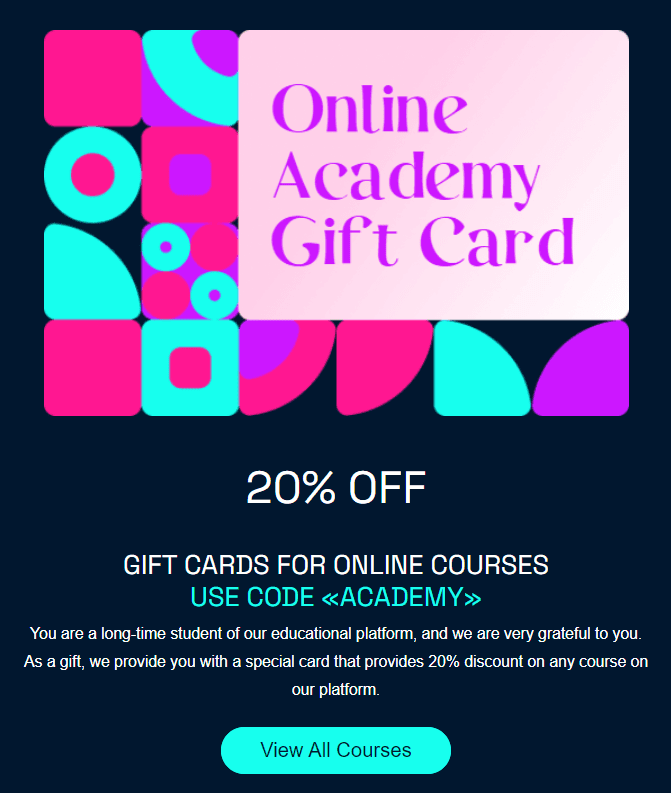
(Source: Stripo template)
3. Design with accessibility standards in mind. Use big fonts and adequate contrast between the content and its background. Always include alt text for your images since screen readers rely on them to describe illustrations to visually-impaired people. Also, pick your colors wisely, as not all cultures interpret them similarly, and people with visual limitations have trouble seeing specific colors or color differences.
4. Opt for a clean newsletter design by dividing your content into smaller sections and placing the most crucial data first. Consider using a one-column layout instead of a multi-column one which usually frustrates mobile device users.
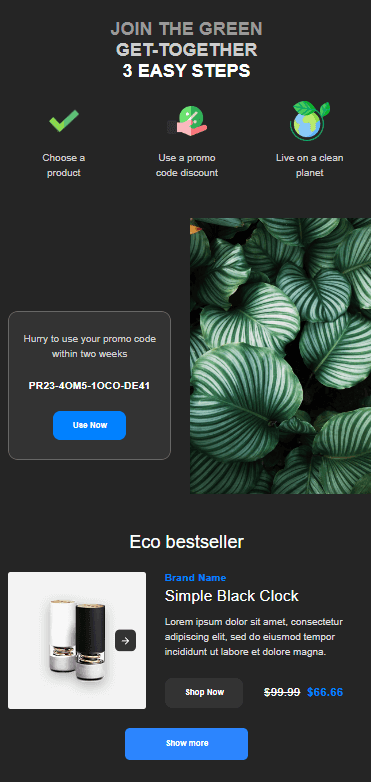
(Source: Stripo template)
5. Add an engaging preheader text. It serves as a complementary element to your email subject line. So, it’s one of the first things readers notice to decide whether they will open your email. What’s more, it could set expectations for your entire email.
6. Don’t be afraid of white space. It makes your email template user-friendly and scannable instead of cluttered. White space allows the human brain to interpret the information included while facilitating mobile users to click the correct link or button.
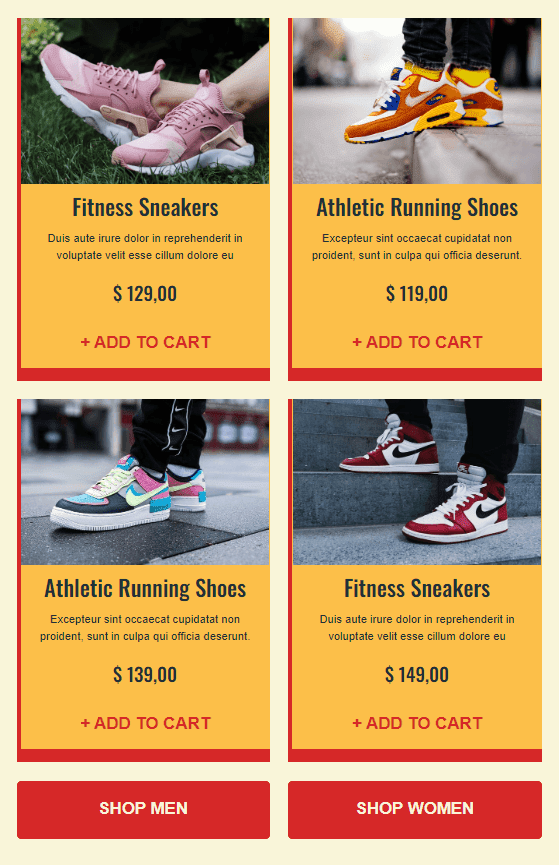
(Source: Stripo template)
Best practice #2. Use a brief yet clear CTA
Your email CTA is one of the most critical elements within your newsletter content. Whether sending users to a dedicated landing page or a fresh blog post, your call to action is what you wish to link your email recipients to. It helps them understand where you want them to go and their next step.
The first rule for creating effective email CTAs is to keep things simple and clear. Ensure your CTA reflects its purpose, letting subscribers know where you want to direct them. Do you want them to complete a sign-up form for an upcoming webinar or to check your new product on your eCommerce site? Also, your CTA copy should be short, straightforward, and actionable without sounding pushy and sales-y.
Here’s an excellent example of a newsletter template by Stripo, leveraging a bold CTA that invites recipients to learn more about healthy food. The email copy is centered around the CTA, and the design uses white space to make it stand out.
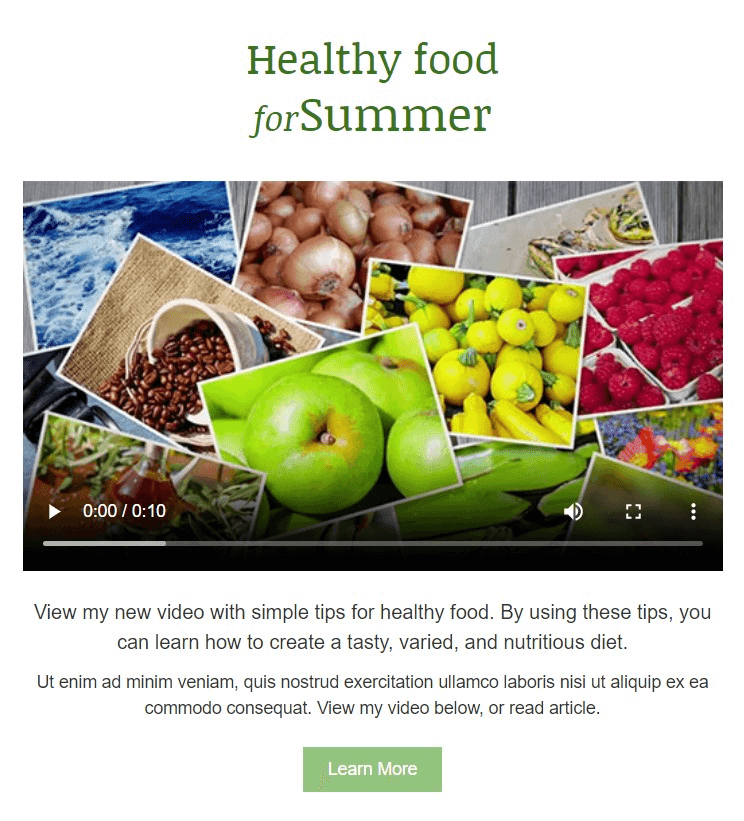
(Source: Stripo template)
When it comes to CTA design, it’s critical to pick the color that best serves your objective. It’s better to choose bold colors that grab the attention and use contrast with the background color to make it noticeable. Most brands prefer using their brand colors in their email CTAs to maintain brand consistency in email marketing. Again, white space will give your CTA design an extra boost to stand out from the content.
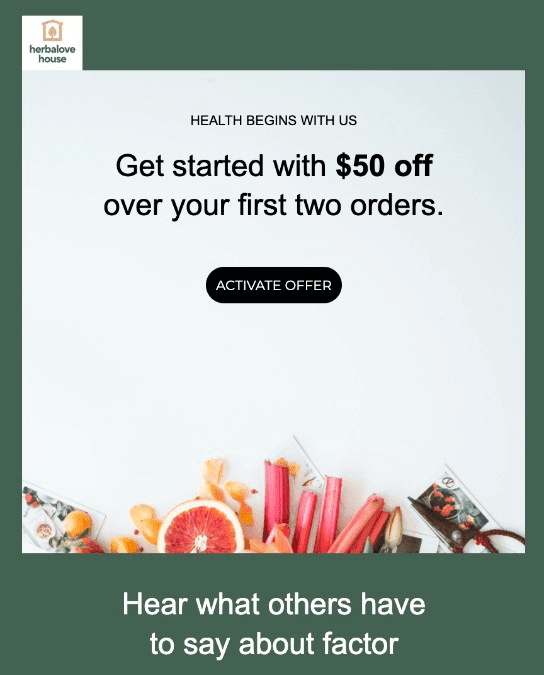
(Source: Moosend)
This email template by Moosend features a prominent CTA, using actionable and precise copy that reflects the CTA’s purpose and adequate color contrast with its background for readers to detect it easily.
Best practice #3. Segment your audience
One of the businesses' biggest mistakes in their newsletters is trying to sell. But the truth is that when users opt-in to your newsletter, they expect valuable content that addresses their pain points and suggests relevant solutions. Therefore, you have to customize your newsletter content to fit their needs. And that’s where email list segmentation comes in to help you divide your target audience into different groups based on criteria like their demographics, purchasing habits, browsing history, etc.
Relevancy is the cornerstone of personalization, and personalized content is key to increasing your click-through rate. And it doesn’t take a lot of effort to make it work. Effective email list segmentation makes sending personalized content a walk in the park, from including your newsletter recipient’s name in your welcome email to sending product recommendations based on previous buying history.
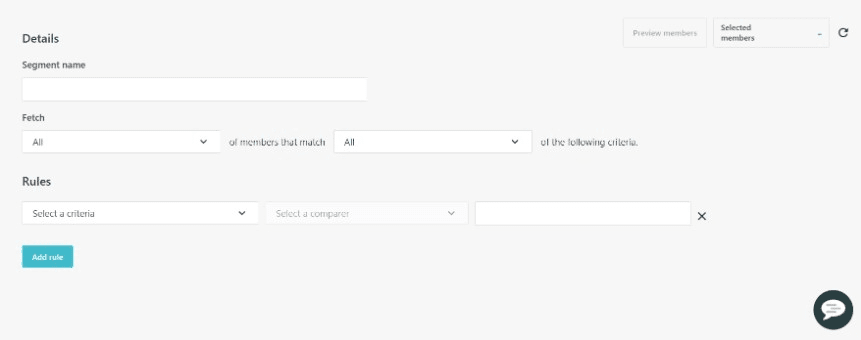
(Source: Moosend)
Email marketing automation platform Moosend features advanced options to segment your email lists and dispatch customized content based on the selected criteria. You can select one of the ready-made segment templates or create a custom one. Then, you must choose the number of contacts included in your segment and set the segmentation rules. There are countless segmentation rules to select, from the recipient’s name to whether or not they were verified through a double opt-in process.
Once you finish creating and overviewing your segment, it’s ready for you to use in your next email campaign. All you need to do is pick the email list you want to dispatch your email to and then select the segment(s) you choose.
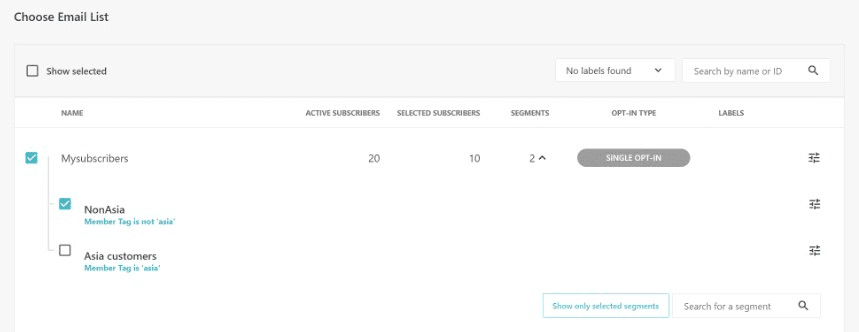
(Source: Moosend)
Best practice #4. Use the right subject line
No matter how compelling your newsletter is, a great email subject line will keep it out of the spam folder and perhaps affect your subscribers’ decision to open your email. So, it can make or break your open rates while impacting other crucial metrics like spam complaints.

(Source: FinancesOnline)
Implementing the best practices for creating compelling and catchy email subject lines is imperative. Let’s check them out:
1. Keep them brief and to the point. Any subject line exceeding 50 characters might prove ineffective or get cut off on mobile devices.
2. Your subject lines should be aligned with the email content. Irrelevant and vague subject lines frustrate readers and could lead them to mark your email as spam.
3. Showcase the value of your email right from your subject line. Be sure to highlight how your newsletter helps your recipients solve their pain points and avoid the sales-y language that drives them away.
4. Avoid spammy words, such as “Buy,” “Click,” or “Money,” which are red flags both for recipients and email clients, alarming them about spammy content. Such tactics could harm your email deliverability.
5. Where appropriate, evoke urgency and scarcity to urge your email subscribers to open your email, or they will miss out on a great offer that is about to expire.
6. Use emojis to catch your audience’s attention. Just ensure you don’t overdo it and that they are relevant to the offer and the email content.
Now let’s check some examples of compelling email subject lines that hit their mark.
Email subject line 1: 🎃 How to Halloween stress-free, easily, and in style 🦇
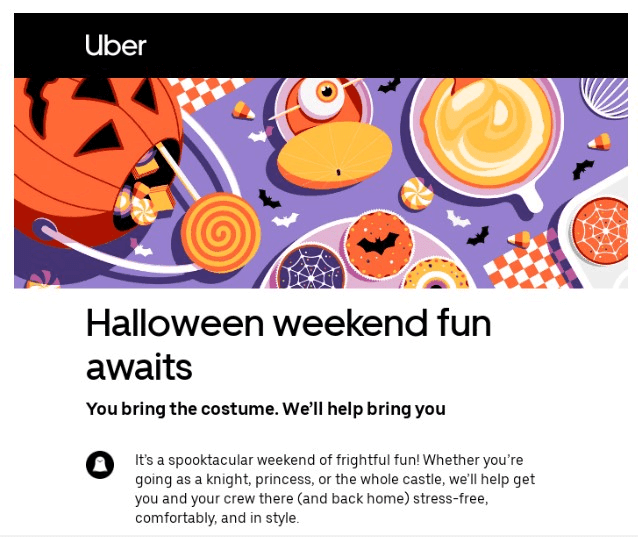
(Source: Really Good Emails)
This funny subject line by Uber sets clear expectations for recipients to know the value of the email content beforehand. The brand leverages the occasion to share timely content and facilitate the preparation process for its readers. Also, they used Halloween-related emojis to catch their attention and complement the subject line copy.
Email subject line 2: How much do you know about sleep?
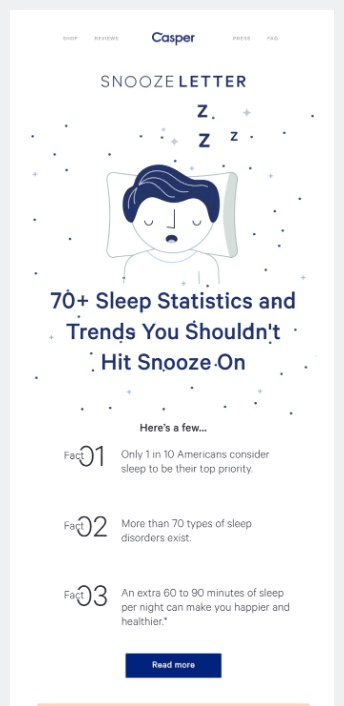
(Source: Really Good Emails)
Casper’s email subject line is brief and straightforward. The reader understands what they gain from reading the email, and that’s valuable information regarding their sleeping habits. Not to mention that using questions in subject lines is one of the most effective ways to increase your email open rates and motivate recipients to look for the answer inside.
Best practice #5. Remember about mobile optimization
With most users checking their inboxes on mobile devices, mobile optimization should be an integral part of your email marketing strategy. We can’t overstate the importance of creating mobile-friendly emails for boosting crucial metrics like your click-through rate and giving your audience the best user experience.
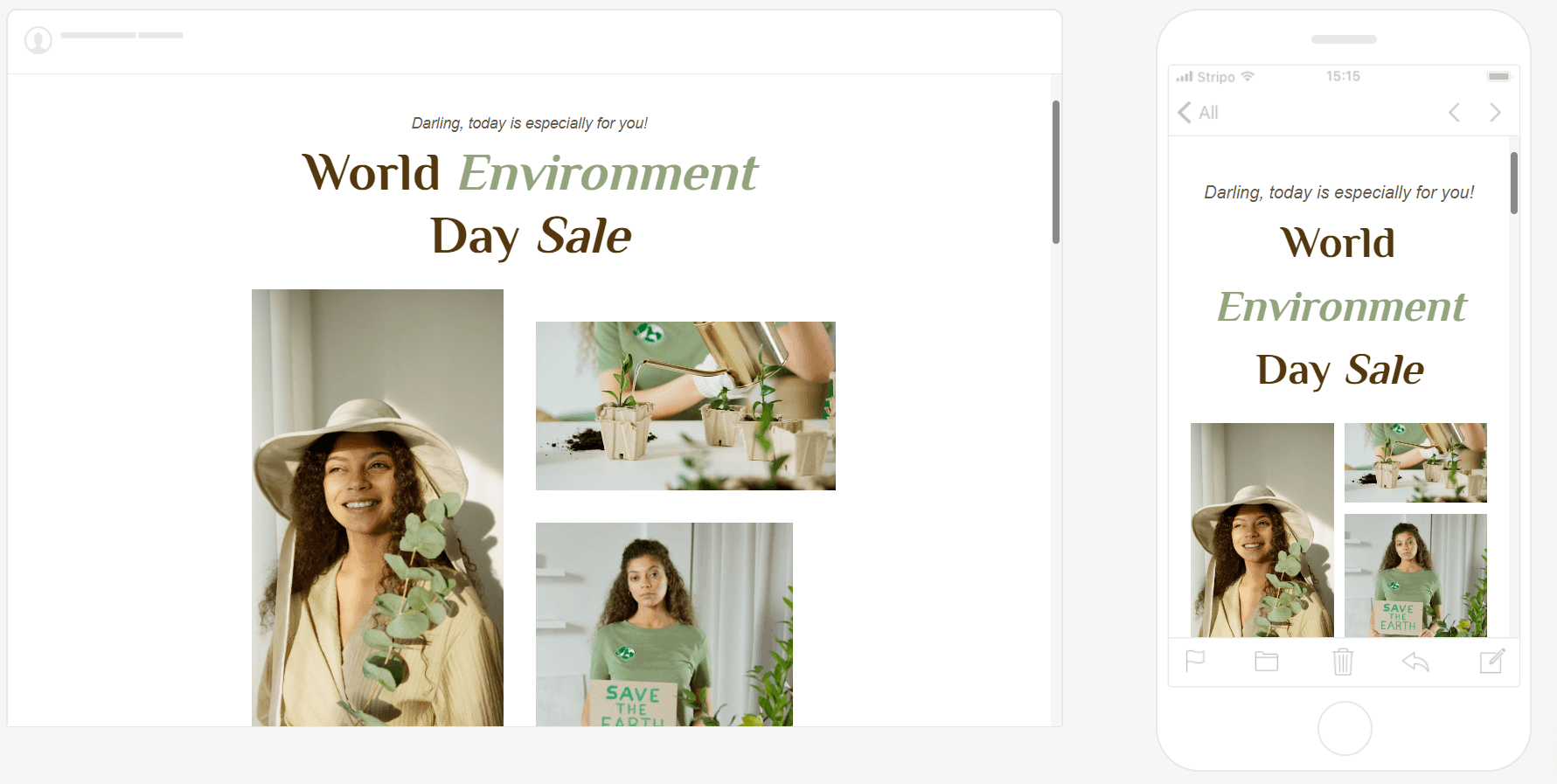
For many marketers, it is a challenging task. However, reputed email marketing tools provide ready-made and responsive email newsletter templates that work great, no matter the device. Is that all there is to it? Well, apart from choosing the best email newsletter templates with responsive layouts, you need to perform some tweaks to optimize your emails for mobile:
- avoid large blocks of text and consider using a brief copy for your mobile version to enhance email readability;
- rethink elements like large images, gifs, or navigation bars, as their excessive use or low quality affects email loading times;
- avoid lengthy subject lines to ensure meaningful copy doesn’t get cut off on mobile devices due to character limitations;
- make your CTAs accessible, opting for visible buttons instead of links. Also, try to focus on a single call-to-action that readers can easily spot and tap on;
- test your emails across different devices and email clients before dispatching them to ensure every element is displayed correctly.
Best practice #6. Benefit from A/B tests
A/B testing helps you find if your email campaigns are on the right track and optimize underperforming components based on real data. You can work on different hypotheses, from testing your CTA placement to adding various types of content like videos or images. There’s even the option of trying different sending times or sender names to monitor which resonated best with your target audience.
For your A/B testing strategy to work, define your key performance indicators (KPIs) to measure success. Understanding which metrics best serve your marketing objectives is key to performing the right tests. For instance, focus on your subject lines to improve your email open rates. Last but not least, ensure you test one variable at a time. This is the only way to know which tweaks in your newsletter impacted its performance when monitoring your email KPIs.
Best practice #7. Add an unsubscribe button
And here comes every email marketer's nightmare: recipients tapping on the email unsubscribe link. That’s why they believe that creating an unsubscribe strategy is counterproductive. But that’s hardly the case. Adding a clear and visible unsubscribe option in your newsletter allows you to maintain a healthy email list, letting you focus on your most engaged contacts.
Moreover, it reduces spam complaints, thus establishing you as a trustworthy sender and improving your email deliverability. But, even more importantly, including an unsubscribe option is a legal requirement in most countries, regulated by anti-spam laws like the CAN-SPAM Act. Failing to comply with these legislations harms your sender's reputation and might result in penalties.
Make sure to leverage precise and clear copy for readers to understand what they should do if they want to unsubscribe. Let’s take Airbnb’s newsletter as an example. The wording is as clear as it gets, informing recipients what they are unsubscribing from — and that’s from all future emails.
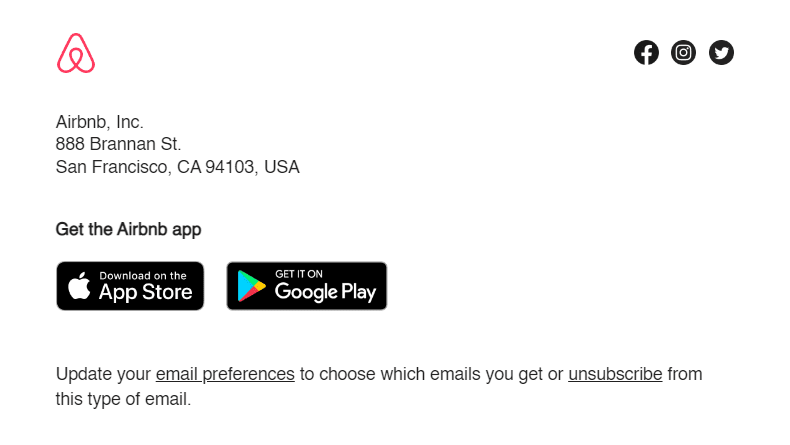
(Source: Email from Airbnb)
Remember that only some recipients looking for your unsubscribe link want to stop hearing from you. So, always include an “update your email preferences” option if a subscriber wishes to control the email frequency or the type of emails they receive. Allowing them to change their preferences is an effective alternative to them opting entirely out of your email marketing material. Check out how MarketingProfs places its unsubscribe link near the “Manage your email preferences” option to give readers an alternative that works for them and the brand.
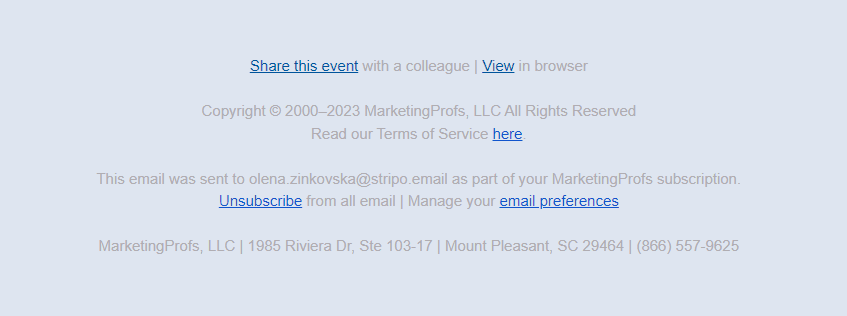
(Source: Email from MarketingProfs)
And if they click the unsubscribe button, it’s not the end of the world either. You could leverage the occasion to ask for their feedback on why they unsubscribed. Include a short survey on your unsubscribe page to identify potential issues and improve your email marketing strategy based on their input. Don’t make this a mandatory step for them to complete their unsubscription, though, as it could bring the opposite results.
Whatever you do, include your social media buttons in every email. Many users prefer to engage with brands through social media, so this might be an effective alternative for them to hear your business news. The Daily Skimm does an excellent job with its email footer, which includes its social media buttons, an option for subscribers to update their mail settings, and an unsubscribe link with a precise copy.
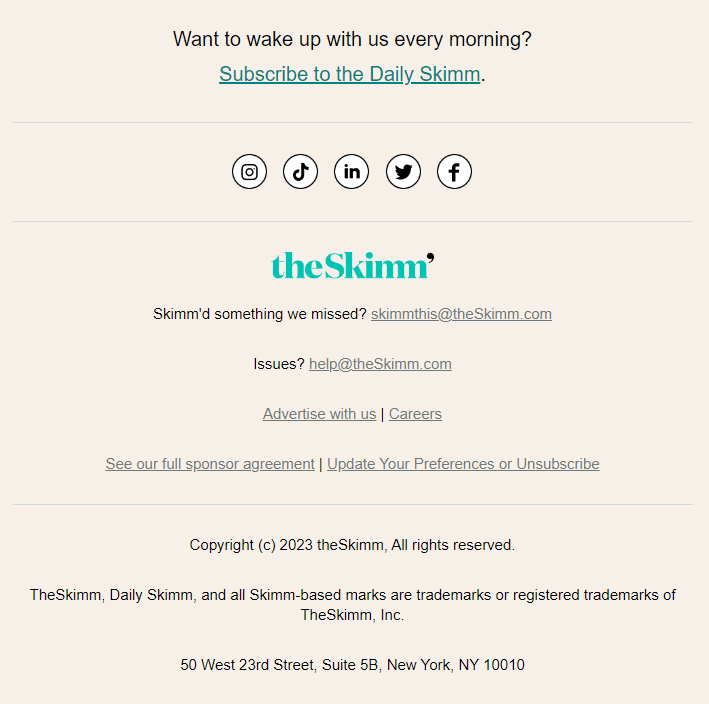
(Source: Email from The Daily Skimm)
Wrapping up
Email newsletters are a fantastic way to nurture and turn your target audience into loyal customers. We know it might seem like a lot to take on, but hopefully, this guide will help you put things together. So, let’s recap the email newsletter best practices you should start implementing:
1. Opt for clean and well-structured templates that are easy to read and designed with accessibility standards.
2. Be mindful of your CTA copy so readers understand the action you need them to take while ensuring it’s strategically placed and visible.
3. Apply email list segmentation to dispatch tailored content that addresses each recipient’s needs and interests and enhances customer loyalty.
4. Keep your email subject lines short, eye-catching, and relevant to the content since it’s crucial to improving your open rates.
5. Always optimize your emails for mobile and use responsive newsletter templates that render perfectly on all devices.
6. A/B test different email components to monitor their performance based on your KPIs and determine where there’s room for improvement.
7. Think of your unsubscribe option as another way to engage recipients instead of hiding it and giving them difficulty completing the process.
And if you are looking for the right tool to create stunning newsletters, Stripo and Moosend offer you pre-designed newsletter templates that you can edit to fit your goals and branding. Both platforms feature templates for different occasions, industries, and email types and intuitive editors with drag-and-drop features to help you build the newsletter that serves your objectives every single time.


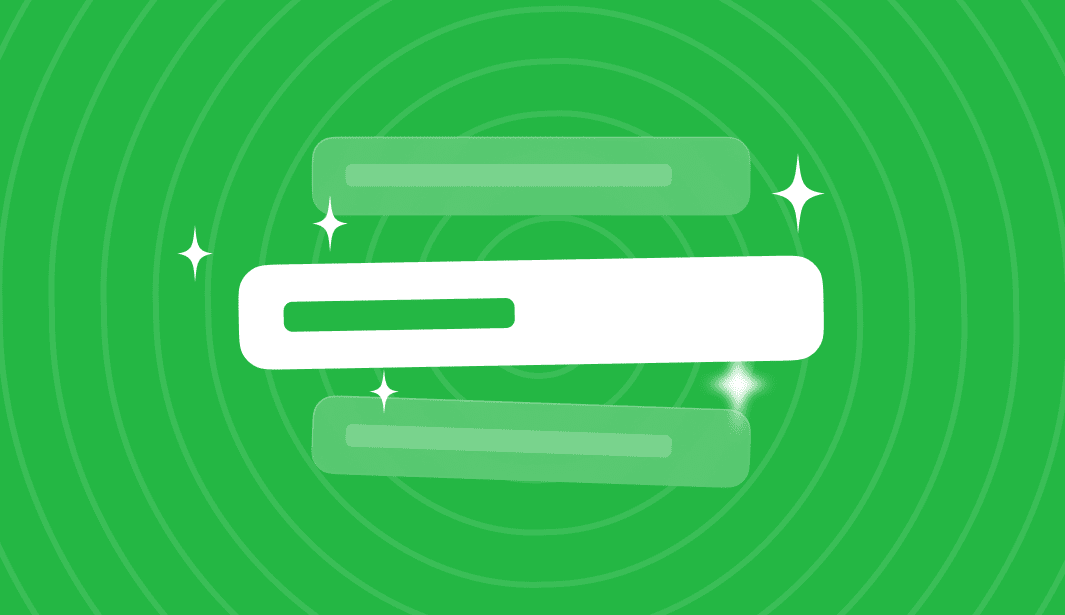



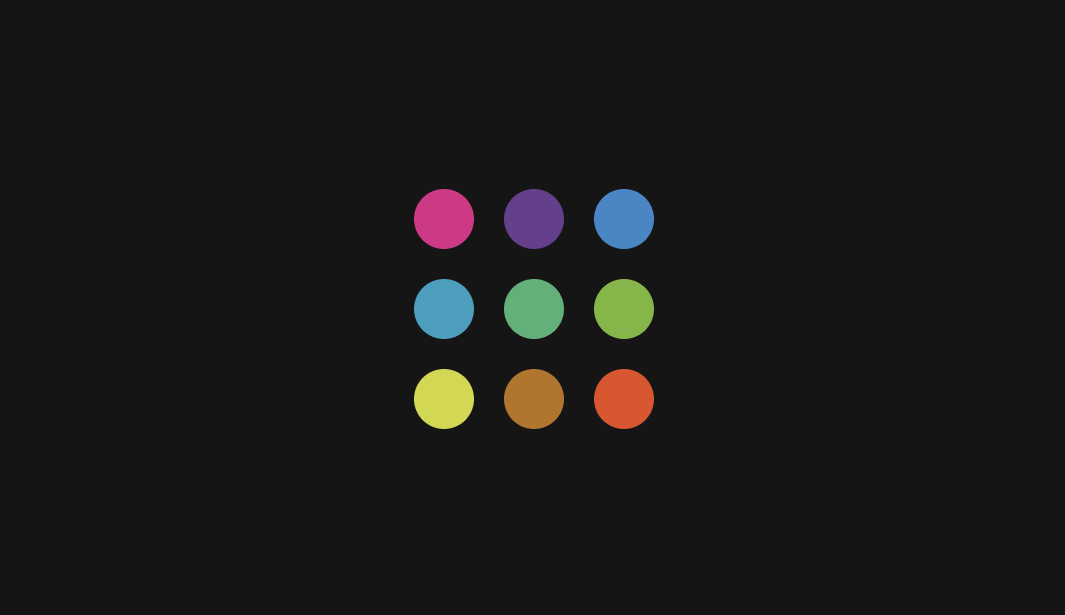
0 comments